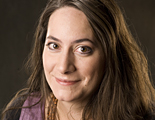
Sarah Corey-Rivas
Las Vegas, N.M. –New Mexico Highlands University joined other education leaders at the American Association for the Advancement of Science conference, “Vision and Change in Undergraduate Biology Education,” in Washington, D.C. Aug. 28 — 30.
Highlands was selected to participate in the working conference based on innovations in science education at the university.
The national Vision and Change initiative is aimed at changing traditional teaching methods to prepare a new generation of scientists, with a focus on active classroom learning and building undergraduate research capability. The movement has been growing since 2006.
In addition to AAAS, the world’s largest scientific society, other Vision and Change sponsors include the National Science Foundation, the National Institutes of Health, and the Howard Hughes Medical Institute.
Biology professor Sarah Corey-Rivas and Will Jaremko-Wright, an environmental science management graduate student, participated in the conference.
“We’re right at the front of the pack for programs we’re implementing at Highlands for student-centered, active science learning,” Corey-Rivas said. “We added the perspective of what we’re doing at our small Hispanic-serving institution to help students become confident in their ability to develop an identity as a scientist. It was valuable to learn about the success stories and challenges at other institutions that are implementing Vision and Change.”
Active learning is a methodology where professors provide students with background information and content, which the students then apply in a classroom activity to answer a scientific question or problem. Active learning is a shift from the traditional class long-lecture format.
Ongoing data collection to assess student learning is an integral component of the Vision and Change initiative nationally and at Highlands.
Jaremko, 24, will complete his master’s degree in December and plans to pursue a doctorate in ecology. He also earned his bachelor’s degree at Highlands. His goal is to teach and research at the college level.
“It was valuable for me to hear what other universities are doing to teach science in new ways in the classroom, and it validates what we’re doing at Highlands,” Jaremko-Wright said. “I feel very fortunate that I experienced active learning science classes at Highlands. I plan to use this approach when I eventually teach my own courses.”
Three professors prepared the abstract submitted to AAAS for consideration, including Corey-Rivas, Mary Shaw, longtime biology professor and Biology Department chair, and forestry professor Sara Brown.
They said the university’s Achieving in Research Math and Science (ARMAS) program played a key role in their abstract’s success.
“ARMAS provides a friendly, supportive atmosphere for learning in science, technology, engineering and math that fosters academic success for students while supporting faculty in science education innovations,” Shaw said.
The professors chose Jaremko-Wright to represent Highlands at the conference, saying he is an exceptional student and teaching assistant as well as an inquisitive scientist in training who uses a collaborative approach.
Highlands University is known for providing undergraduate research opportunities in the science disciplines of biology, geology, natural resource management, and chemistry. The three professors want to build on that track record.
“We have been making progress towards implementing major changes in the Vision and Change guidelines at Highlands,” Shaw said. “In biology, we’re bringing authentic, original research into the classroom and field as part of the instruction.”
Corey-Rivas added: “Participating in a research project does amazing things for students’ retention and graduation rates. The national consensus is that students should get their hands wet with original research early in their education.”
Brown completed an NSF-sponsored postdoctorate at Michigan State University based on implementing Vision and Change best practices, which she uses in all her classes at Highlands.
“We want to cultivate deep learning where students internalize concepts and apply them,” Brown said. “A major goal of the Vision and Change program at Highlands is to facilitate developing scientifically literate people who can think critically about the world’s problems, from climate change to conservation.”
During the past year, the science faculty at Highlands has worked in collaboration to revise the university’s strategic plan for STEM disciplines, with ARMAS facilitating the process. Vision and Change practices that fit the needs of the university’s students are being discussed for inclusion in the plan.
